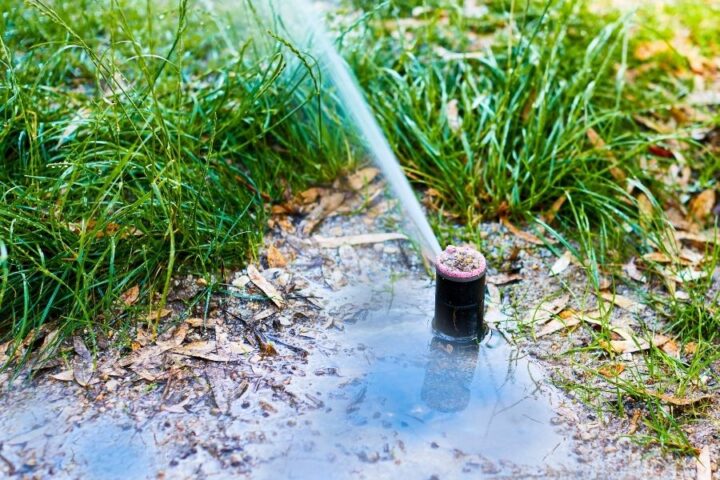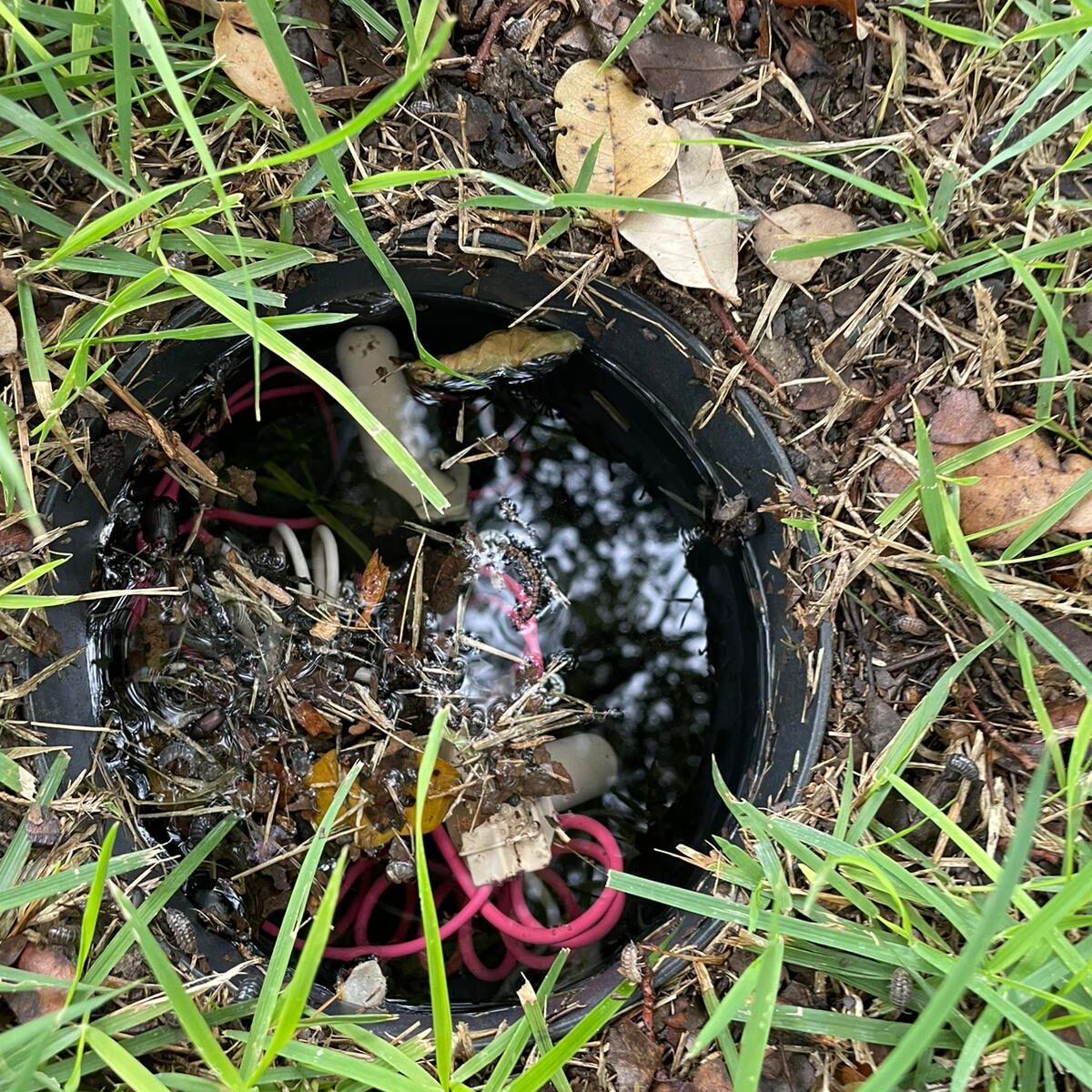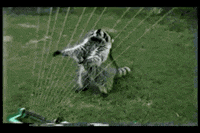As you fire up your sprinkler system for the first time this spring, it’s important to check for any leaks that may have developed over the winter. Catching and repairing leaks early can save water and money and prevent damage to your landscape. Here are some tips from Scott Ingalls, irrigation manager at Top Choice Lawn Care in Austin, for identifying and fixing common types of leaks.

Types of Irrigation System Leaks
There are a few different types of irrigation system leaks we want to look for, especially after a few freeze events last winter.
When we look for leaks, we start at the system’s main connection to your water and trace our way out to each individual line, valve, and head.
- Mainline leaks – The mainline is the pipe that runs from the water source to the valves. If you don’t have a master valve, a mainline leak will cause the yard to get constantly wetter, even when the system isn’t running. With a master valve, mainline leaks will only be apparent after the system has been running.
- Lateral line leaks – These are leaks in the pipes that run from the valves to the sprinkler heads. They can be tricky to spot, but look for excessively wet, squishy spots in the lawn or beds when the system is running.
- Leaking valves – Inspect the valve boxes for signs of moisture or squishy soil around the valves. Valve leaks often require digging up and replacing the valve, which can take a few hours depending on the location and size.
- Leaking sprinkler heads – Check for water bubbling up or pooling around sprinkler heads during operation. The leak could be in the head itself or at the point where it connects to the lateral line.
- Drip systems – Check for spraying water, flooding, or soggy spots, which can indicate a break in the drip line. Many drip systems have indicator heads that pop up when the system is pressurized — if these don’t pop up fully, there may be a leak or clog.
- Bubblers – Make sure water is bubbling up around the tree and not washing away the mulch, which could mean a clogged or broken bubbler head.

What If You Can’t Find an Irrigation System Leak?
Sometimes, leaks are obvious. Other times, they can be a bit harder to spot. Pay close attention to discoloration or wet/squishy areas in your yard where slow leaks may be accumulating.
Some leaks are too small to easily detect. In these cases, we bring in a professional leak detection company. They first use sensitive sonic listening devices to search for leaks along the lines. If they still can’t find anything, they use specialized equipment to inject gases into the lines, which will force the leaks to be revealed.
Schedule Your Spring Irrigation Checkup
Inspecting your irrigation system regularly is the best way to catch leaks and performance issues before they turn into bigger headaches. If you see problems or just want a professional opinion, contact Top Choice Lawn Care to schedule a comprehensive irrigation evaluation with one of our licensed specialists.
We’ll check for leaks, test the coverage, and make sure your lawn is getting the right amount of water to thrive all season long. Call us today to book your appointment and cross one more thing off your spring to-do list!


